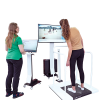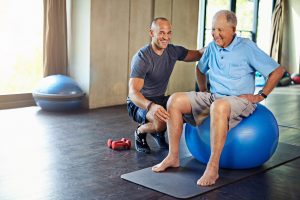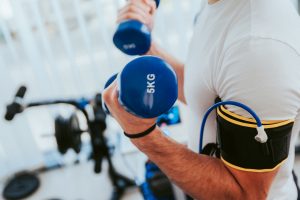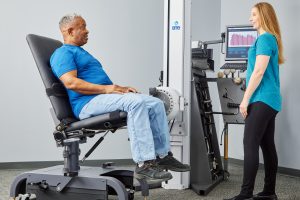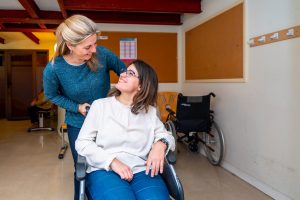
Adaptive Physical Therapy: A Guide for Clinicians
Treatment GuidelinesLearn what adaptive physical therapy is, who it serves, and how to implement adaptive PT techniques to expand your clinic’s impact and patient outcomes.
Physical therapists face an increasingly complex challenge: serving patients with diverse rehabilitation needs while delivering measurable outcomes. For patients who haven’t responded well to traditional approaches, whether due to chronic conditions, complex post-surgical presentations, or low load tolerance, adaptive physical therapy represents a thoughtful application of evidence-based principles rather than an entirely separate discipline.
Understanding adaptive physical therapy and its strategic implementation can improve patient outcomes while expanding your clinic’s service capabilities. The key lies in recognizing that this approach is simple to implement and can improve individualization to treatment programs and patient buy-in.
The Foundations of Adaptive Physical Therapy
Defining Adaptive Physical Therapy
Adaptive physical therapy involves modifying standard therapeutic interventions, equipment, and environments to meet the unique needs of patients with complex rehabilitation requirements. From customized footwear to wheelchairs and prosthetic limbs, to even telehealth services, adaptive PT emphasizes individualized problem-solving and creative application of therapeutic principles.
The core philosophy centers on improving function and independence—the same foundation underlying most effective rehabilitation. Research consistently demonstrates that assistive technology improve both functional outcomes and patient satisfaction while reducing healthcare costs. 1
Patient populations commonly served include individuals with chronic pain conditions, complex post-surgical presentations, neurological impairments, and those with significant mobility restrictions. Post-surgical knee patients, for example, may benefit from a continuous passive mobility machine when traditional strengthening exercises exceed their load tolerance. Similarly, patients recovering from Achilles ruptures might utilize mobility devices like knee scooters to maintain functional independence while protecting healing tissues.
Key Distinctions: Adaptive PT vs. OT and Adapted Physical Education
Understanding the distinctions between adaptive physical therapy, occupational therapy, and adaptive physical education helps clinic directors position services appropriately and build effective referral networks.
Occupational therapy focuses primarily on activities of daily living, work-related tasks, and cognitive-perceptual skills. While OT practitioners may use adaptive equipment, their interventions target functional performance in specific occupational contexts. Physical therapy emphasizes movement quality, strength, mobility, and pain management through therapeutic exercise and manual interventions.
Adaptive physical education operates within educational settings, modifying curriculum and activities for students with disabilities. Unlike clinical rehabilitation, APE focuses on participation in physical education rather than addressing specific impairments or functional limitations.2
These distinctions matter for legal and reimbursement purposes. Physical therapy services are considered direct medical interventions, while adapted physical education falls under educational support services governed by different regulatory frameworks. The Individuals with Disabilities Education Act (IDEA) requires schools to provide eligible students with disabilities a free and appropriate education, including related services like PT when needed.3 Meanwhile, Section 504 prohibits disability discrimination in federally funded programs and guarantees reasonable accommodations.
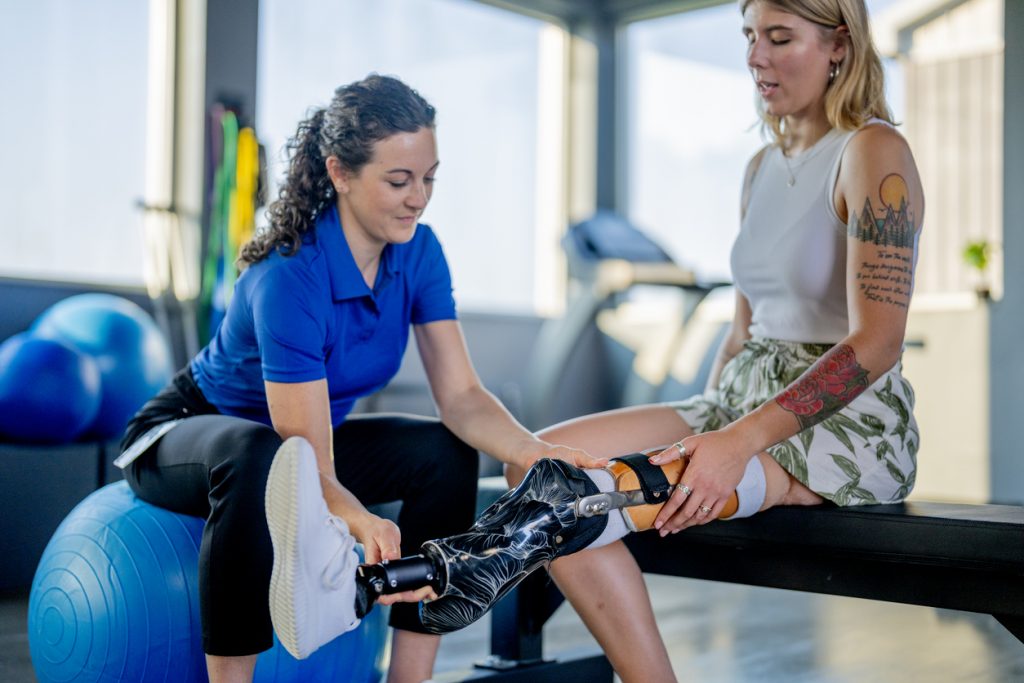
Clinical Application and Techniques
Core Techniques and Therapeutic Goals
Adaptive physical therapy techniques span a broad spectrum, unified by the principle of meeting patients where they are functionally. Personalized exercise programming remains the foundation, but implementation may require creative modifications.
Take blood flow restriction therapy (BFR), for example. When traditional resistance training exceeds a patient’s load tolerance as seen in post-surgical ACL repair or chronic pain conditions, BFR allows therapeutic strengthening with significantly reduced loads. Research demonstrates that BFR can produce strength gains comparable to high-intensity resistance training while using loads as low as 20-30% of one-repetition maximum. 4
The Role of Equipment and Environment
Adaptive equipment serves as a bridge between current functional capacity and therapeutic goals rather than permanent solutions. Assistive devices should facilitate progression toward independence rather than creating dependency.
Common adaptive equipment includes mobility aids (walkers, canes, knee scooters), supportive devices (braces, splints), and modified exercise equipment. The key lies in strategic implementation. Using these tools to enable active participation in therapeutic exercise rather than replacing it with passive interventions. A 2020 systematic review supports that an elbow brace can reduce pain, improve grip strength, and increase arm function in the short term for patient’s suffering from lateral epicondylitis.5
Environmental modifications often prove as important as equipment selection. This might involve adjusting treatment table heights, modifying exercise stations for wheelchair accessibility, or creating visual cues for patients with cognitive impairments. Recent research indicates that environmental factors significantly influence rehabilitation outcomes, particularly for patients recovering from strokes.6
Implementing Adaptive PT in Your Clinic
A Physical Therapist’s Implementation Roadmap
Successful adaptive PT implementation requires a combination of planning, communication, and critical thinking. Essential equipment needs vary by patient population but typically include adjustable mobility aids, splints, braces, and modified exercise tools.
However, the most important investment is staff education. Physical therapists need to apply proper critical thinking skills for assistive device prescription and progressive loading modifications for complex presentations. Regular in-service training, mentorship programs, and continuing education investments pay dividends through improved clinical results and staff confidence.
Secondly, establishing relationships with trusted medical equipment vendors, orthotists, and community organizations creates referral networks while reducing equipment costs through demonstration programs and volume purchasing agreements.
Access, Reimbursement, and Outcomes
Patient Qualification and Access to Care
Patient qualification for adaptive PT services follows standard physical therapy criteria with additional documentation requirements for equipment justification. The assessment process emphasizes functional limitations rather than diagnostic categories, focusing on how impairments affect daily activities and participation.
Documentation must clearly establish medical necessity for adaptive approaches, demonstrating that standard interventions are inappropriate or insufficient for the patient’s presentation. This typically involves functional assessment data showing specific limitations that require modification or adaptive therapy.
Financial and Insurance Considerations
Reimbursement challenges often create implementation barriers, but strategic planning can address most concerns. Medicare and Medicaid coverage for adaptive PT services mirrors standard physical therapy benefits when properly documented and medically justified.
Insurance coverage for adaptive PT services generally falls under standard physical therapy benefits. However, equipment coverage varies significantly between payers and may require prior authorization or letters of medical necessity. Understanding these requirements prevents delays and ensures appropriate service delivery. Authorization for physical therapists to provide adaptive equipment, including prescription and fabrication, is governed by the individual state’s Physical Therapy Practice Act.7
Conclusion: Expanding Your Repertoire
Success requires commitment to individualized care, creative problem-solving, and systematic implementation. The investment in staff development, equipment, and program infrastructure pays off in the long run through improved patient satisfaction, expanded referral networks, and building clinical reputation.
Being a good clinician lies not in choosing between traditional and adaptive approaches, but in skillfully combining them to meet each patient’s unique needs. Adaptive physical therapy provides the framework for this integration, ensuring that complex cases receive the specialized attention they require while maintaining the evidenced-based approach that defines excellent patient care.
For clinic directors ready to expand their service offerings, adaptive physical therapy offers a pathway to serving previously underserved patient populations while strengthening clinical excellence across all service lines.
Martin Gonzalez, DPT, Cert DN, is a board-certified physical therapist and health writer specializing in chronic pain management, injury prevention, and Achilles tendon ruptures. With more than six years of clinical experience across neurological, outpatient, and pediatric settings, Dr. Gonzalez combines hands-on expertise with a passion for education. As a writer, he has contributed to fitness publications, newsletters, and rehabilitation courses, with the goal of improving health literacy and breaking down socioeconomic barriers to care.

